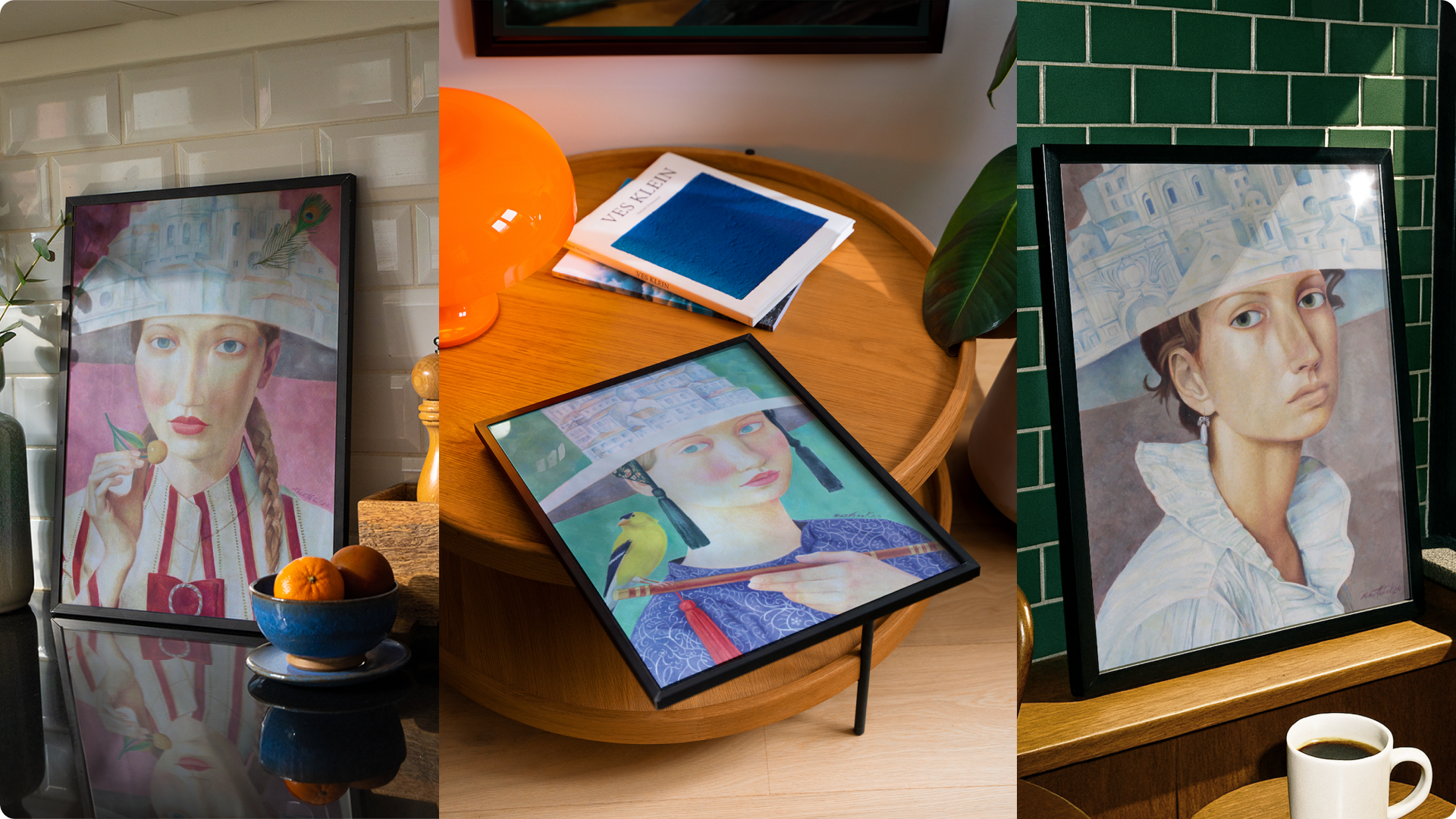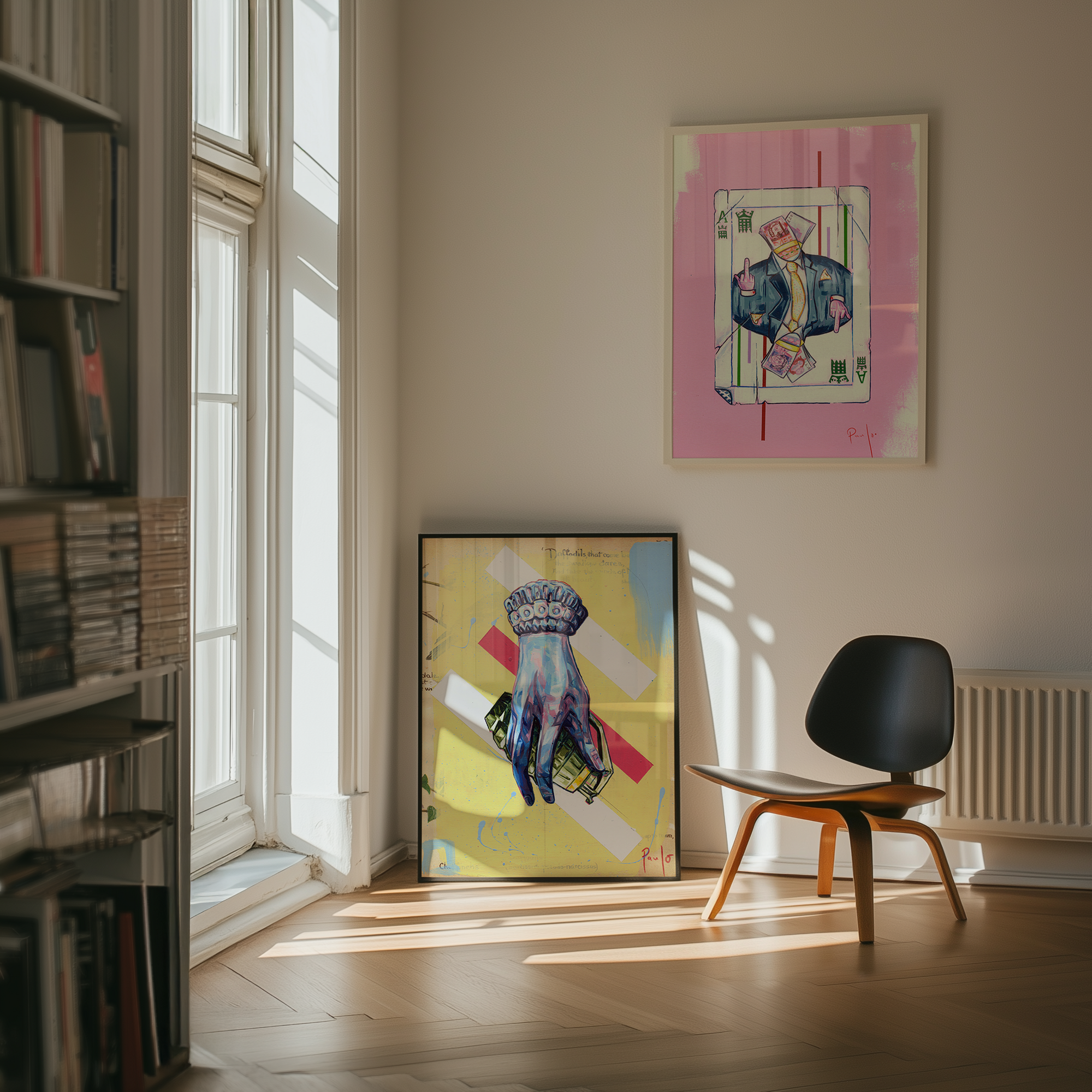In Mengzhu Li's work, the use of selfies and family imagery intertwines tension and tenderness, crafting a captivating narrative of East Asian women that transcends personal memory to become part of a collective cultural consciousness. As a photographer and visual artist operating between China and the UK, Li employs her dual identity as a lens—both literal and metaphorical—to explore the psychological landscapes of intergenerational relationships, gender roles, and emotional legacies.
Graduating from Central Saint Martins with a master's degree in contemporary photography and philosophy, after training in Beijing, Li's series of photographs are profound, performative, and often unsettling. These works navigate the intersection of personal vulnerability and socio-political commentary. They not only depict their subjects but also enact encounters between mother and daughter, tradition and modernity, intimacy and autonomy. This includes the inherent contradictions often found in mother-daughter relationships within East Asian families, shaped by the differing experiences of previous generations. Women in China during the 70s and 80s frequently occupied the role of "caretaker," where love within parent-child dynamics could become distorted, morphing into a desire for control over their children's lives.
The series titled "Daughter of My Mother" primarily features Li and her mother, using the first-person perspective to elucidate their contradictory affections. In "Mutual Discontent," the mother and daughter, bare-chested, confront a backlit window, their poses both casual and provocative. This mirrored stance highlights inherited identities and the physical and emotional imprints of familial intimacy. It represents a quiet yet radical closeness that rejects sexualization in favor of raw realism.

Above: Mengzhu Li | Mutual Discontent
In "Two in One," a striking image emerges: the mother’s mouth is covered with tape while the daughter gazes at her mother’s profile. This scene feels like a silent argument—love suppressed and constrained, expressed through a generational gap of forced silence. In this blood-tied relationship, one wonders whether the daughter’s voice is truly heard, or if the mother’s miscommunicated affections are successfully received.
The theme of disrupted communication recurs throughout Li's work, serving as a metaphor for the struggles within mother-daughter relationships that prevent them from genuinely feeling each other. Her visual narrative often conveys its loudest messages in the absence of words, emphasizing the profound disconnect that can exist even in the closest of familial bonds.

Above: Mengzhu Li | Two in One
In "Making," the mother weaves red yarn tightly across the daughter’s face, completely obscuring her. This suffocating intimacy signifies a nurturing that transforms into confinement—a visual parable of love that is too tightly bound. The yarn, traditionally seen as a "feminine" material, critiques the domestic labor and emotional weaving that women are often expected to undertake, particularly within conservative Asian families. This piece challenges the notion of nurturing, revealing how it can also serve as a means of control, illustrating the complexities of love intertwined with societal expectations.

Above: Mengzhu Li | Making
The brilliance of Mengzhu Li's work lies in the perfect fusion of conceptual depth and inherent emotion. Her photographs transform into poetic texts, where every visual element—pose, gaze, fabric, or environment—serves as syntax within a language of memory and critique. Through constructed scenes and symbolic actions, she captures the paradox of female identity shaped by care and control.
In today’s global art landscape, multiculturalism and identity politics often remain superficial themes; however, Li's work stands out for its emotional precision and philosophical grounding. Her visual essays are neither didactic nor decorative, but rather transform lived experiences into art. By focusing on the nuanced tensions in mother-daughter relationships within one-child families—particularly in East Asian contexts—she opens a broader dialogue about how we inherit, resist, and reimagine our roles in culture and kinship.
Li’s art calls for witnesses: not just to observe the lives of women in transitional periods, but to feel alongside them—the heaviness, warmth, and the unspoken spaces in between. "Daughter of My Mother" also speaks to the moral responsibility of artistic creation. Li’s work acknowledges that art can foster resonance and dialogue, bridging cultural divides and highlighting our shared humanity. Thus, this series is not merely a personal narrative; it initiates a wider conversation about femininity, racial identity, and the complex ways women navigate self-awareness and familial consciousness.
The duality and potential of cultural hybridity are vividly reflected in Mengzhu Li. Having lived most of her life in Beijing and now settled in London, her perspective is deeply rooted in her Chinese experiences rather than being shaped by Western influences. This project, created for a Western audience, aims to shed light on the challenges many contemporary Chinese families face. This purpose gives "Daughter of My Mother" a profound emotional resonance—an introspective exploration of identity paradoxes in a context where cultural boundaries are fluid yet acutely felt, prompting inquiries into the structure of East Asian families.
As her works gain increasing visibility in exhibitions across London and Milan, Mengzhu Li has emerged as a formidable presence in 21st-century photography. Her participation in exhibitions like "Broken Silence" by The University of Edinburgh and "Metamorph" by Artflow at Espacio Gallery firmly positions her within discussions on East Asian parent-child dynamics and social identity. Her inclusion in international art week further highlights the recognition of her ability to address pressing cultural issues through a distinct and intricate visual language.
Ultimately, "Daughter of My Mother" profoundly illustrates a humanitarian narrative that spans cultures, emotions, and art. It encourages viewers to transcend superficial judgments and contemplate the nuanced realities of family, identity, and the complexities of love and communication. Li's story invites us into her inner world, allowing us to explore the unique family structure of East Asian only children through her mother-daughter relationship. It embraces the ambiguity of interpersonal connections and cultural narratives while encouraging empathy in a world often torn by differences.
At the same time, it highlights the historical and societal pressures that women endure, which are transmitted across generations. This tension between connection and separation, possibly a reflexive response to emotions, serves as the driving force within the series.


